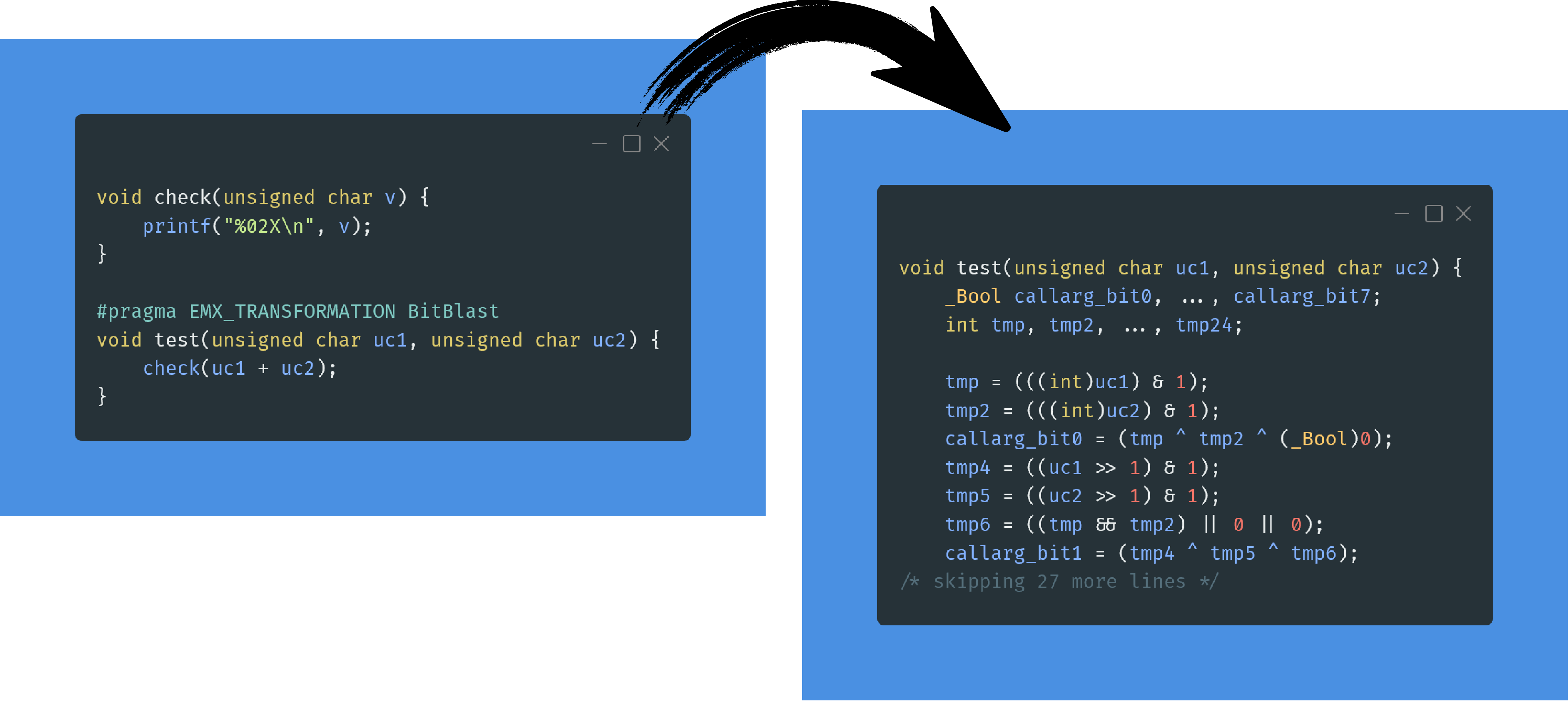Bitblast Transformation: Turning Code into Pure Boolean Logic
emmtrix Tech Posts
Category: General Transformations
Our Code Transformation series continues! After covering Loop Unrolling, Loop Interchange, and Procedure Inline, we’re now looking at a transformation used in formal verification and dependency analysis: Bitblast Transformation.
What is Bitblast Transformation?
Bitblasting converts operations on word-level data types (e.g., 32-bit integers) into equivalent bitwise logic. Instead of treating a variable as a whole, each bit is handled separately, allowing Boolean satisfiability solvers (SAT solvers) to process them more efficiently.
Why use Bitblast?
- Essential for formal verification (e.g., hardware/software verification)
- Enables further compiler optimizations, such as constant propagation and dead code elimination
- Enables deep analysis of bit-level dependencies
- Transforms arithmetic operations into pure Boolean logic
⚠️ While bitblasting allows for precise bitwise analysis, it significantly increases the number of variables, making it computationally expensive for large bitvectors.
Example:
An addition of two 8-bit integers is transformed into individual bit operations using Boolean logic.
Instead of result = x + y; each bit operation is explicitly represented and computed.
Figure 1: Example Bitblast Transformation
Already posted articles:

